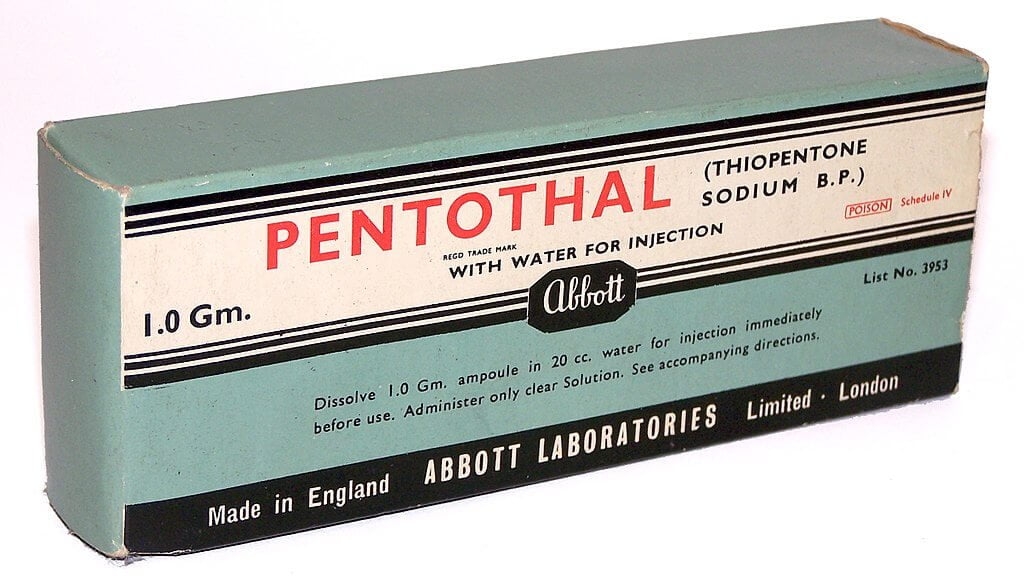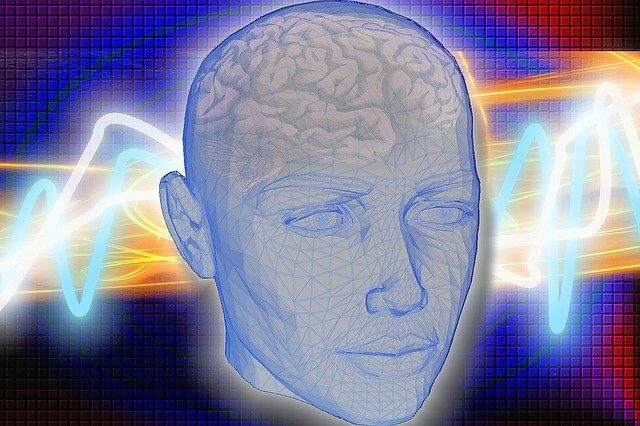Forensics: exact science or dramatised fiction? #6

Many readers should be able to recall the Aarushi murder case in which a 14-year old girl Aarushi and the family’s 45-year old domestic help Hemraj were found murdered inside their house. Initially, the police thought that other domestic servants were suspects, however, later the parents of the deceased were reported to be the accused. The case fell apart in the Allahabad High Court on appeal and the court castigated the CBI in severest terms.
In this case, there was a most shameful, circus-like parallel trial by the media with all sorts of animated gory scenes including that of wife-swapping enacted on TV. The three other domestic bits of help/compounders, namely, Krishna, Raj Kumar and Vijay Mandal were subjected to narco-analysis. A leading news channel had even aired real or fake videos of the narco-test conducted on one of the accused—the baritone voice of the cop asking questions like ‘Haan to Krishna batao tab tumne kya kiya tha’. This also exposes the class bias which police officers harbour against poor people.
The narco-tests failed and no lead could be obtained in the investigation from them. In the end, even a biased investigation could not carry on the farce further and they had to charge the parents instead. In effect, it became a much-publicized
How some people sold the sham to the public?

Narco-tests involves the administration of a drug like Sodium Pentothal that causes the subject to enter into a hypnotic trance and become less inhibited. Many people who are not used to alcohol, experience a similar effect. Precisely for this reason, many unscrupulous men who want to seduce some woman in a social gathering where the atmosphere is of frolicking ply her with alcohol to make her less inhibited and thus more susceptible to their sexual advances. The ‘belief’ is that being less inhibited or less guarded will make the subject more likely to divulge information. Even the ancient Romans ascribed to this myth, which accounts for their saying, ‘Veritas in vino’, that is, in wine lies the truth. People have been drinking and getting drunk for centuries. Had it been so easy to ferret out the truth with the help of alcohol, life would have been infinitely easier.
Readers must know that, besides other agents, Sodium Pentothal is not used only for this purpose. It is also used in appropriate quantities as a general anaesthetic during surgery. When this technique was introduced first in the early 1950s, they used scopolamine and sodium amytal.
How they stumbled upon it? During the early years of the 20th century, they used to administer something called ‘twilight sleep’ to women in labour—a mixture of morphine and scopolamine and, if necessary, light anaesthesia with chloroform. Morphine dulled labour pains without materially interfering with the muscular contractions of labour, while scopolamine wiped out subsequent memories of the delivery room ordeal. The practice was later stopped as it was prone to over-dosage.
During the period of extensive use of `twilight sleep’ it was noticed that under its influence, women were extremely candid and uninhibited in their statements. They often spoke things which obviously they would not have spoken in their normal state.
In 1922, one Dr Robert E. House took off from there using the same compounds for eliciting information from suspects and criminals. Others then introduced Sodium Amytal and Sodium Pentothal. The term narco-analysis was, however, coined in 1943 by J. Stephen Horsley.
Later, they started administering barbiturates or certain other chemical substances, most often Sodium Pentothal, for narco-analysis. These are the substances that have been immortalized in popular fiction as the so-called ‘Truth Serum’. The very term ‘truth serum’ is a misnomer because the drugs used are not serums and in any case, they do not bring out the truth.
Scientifically, a fundamentally flawed premise
Narco-analysis presumes that a man’s brain is like the hard disk of a computer in which information is stored in separate sectors but the conscious mind or the ‘will’ of the man exercises ‘access control’ over the information. That is to say, the man will let out only what his conscious mind permits. If his ‘conscious control’ is somehow removed or weakened, such as under the influence of alcohol or a hypnotic drug, this access control will be removed or weakened and he will let out everything.
Needless to say, this is an utterly simplistic presumption without any scientific basis. Modern neurological research has proved that the human mind does not store information like the hard disk of a computer and neurons are not like sectors on a hard disk.
This is patently wrong for it would mean that if some neurons were to be removed surgically, the man would irretrievably lose the information stored therein. It does not happen so as it has been observed in countless neurosurgeries. Further, the number of neurons may decrease significantly after the age of 60—that does not mean that the man’s memory would go down or his mental abilities would suffer—in fact, many people become sharper with age.

The human brain is actually an extremely complicated network of about a hundred billion neurons. Considered collectively, the network has electrical patterns meandering through it and individual signals are of little importance.
The farce of narco-analysis is based on an incorrect understanding of the subconscious mind. The subconscious is not merely what the conscious keep under access control. It comprises a million things including fantasies, imaginations, and permutations and combinations of the information stored.
All such things are not arranged in any systematic order nor are they kept in mutual isolation. Both points are very important. That they are not stored in an orderly fashion means that they are not likely to be found by the chronological order in which they were stored. It also means that they are not arranged subject-wise. It is not that you have a folder called ‘murder’, you double click on that and all that the man has in his mind on murder will come tumbling out. That they are not kept in isolation means that the pieces of information stored are completely free to interact with each other and produce results that cannot be even imagined by the conscious mind.
Everybody gets weird dreams at times—in fact sometimes so weird that one could be ashamed of having had such a dream when he wakes up. How do you get them?
It is from this interplay of memories, suppressed desires, and images and so on—all in the so-called subconscious. When you dream, your subconscious is no longer under conscious control and that’s how it gets complete freedom to indulge in the interplay. Precisely the same thing happens when you are drugged.
As a result, what comes out is a similar product of an unimaginably complex interplay of all that is there. In fact, the stronger the drugging, the more complex the interplay—that is, dreams of the weirdest kind. The pseudo-science of narco-analysis takes them to be factual information!
In simple words, what a man says in his drug-induced stupor is of no consequence—he is hallucinating! A drugged subject is not in a position to speak up on his own but he can answer specific but simple questions after giving some suggestions. This in itself makes the whole thing bogus. Giving suggestions amounts to providing answer to a subject, who is already in a state of lowered conscious control. Hence more often than not, he tends to agree with the suggestions. If the suggestions match with his fantasies or imaginations stored, they may come out.
Narco-analysis was debunked way back in 1951 itself during the experiments conducted at Yale University by J. M. MacDonald. Joost Meerloo of the Columbia University debunked it again in 1956, and then others followed. There is a vast body of scientific research that has conclusively proved that narco-analysis cannot ferret out the truth from the depths of the mind of a determined subject. Yet in this country, the police and the intelligence agencies still do it and the media regards it as the ultimate truth—simply because all of them are dumb.
The Supreme Court has also debunked and banned it

The final and ultimate condemnation of narco-analysis came through the hands of a Three-Judge Bench of the Supreme Court in the case of Selvi & Ors vs State of Karnataka & Anr (2010).
The Supreme Court observed, “It does not have an absolute success rate and there is always the possibility that the subject will not reveal any relevant information. Some studies have shown that most of the drug-induced revelations are not related to the relevant facts and they are more likely to be in the nature of inconsequential information about the subjects’ personal lives… While some persons are able to retain their ability to deceive even in the hypnotic state, others can become extremely suggestible to questioning. This is especially worrying since investigators who are under pressure to deliver results could frame questions in a manner that prompts incriminatory responses. Subjects could also concoct fanciful stories in the course of the `hypnotic stage’. Since the responses of different individuals are bound to vary, there are no uniform criteria for evaluating the efficacy of the `narco-analysis technique.” The Court also cited numerous judgments of the American Supreme Court with approval.
Also Read:
Lie-Detector Test- so near, yet so FAR from TRUTH
Ballistics- evidence at Gunpoint
The stupidity-cum-atrocity must stop immediately
I must inform you that narco-tests have been formally discredited in most democratic states, including the United States and Britain not only on account of its being unscientific but also on account of it having serious legal and ethical implications. The simple legal position is that subjects under a semi-conscious state do not have the mindset to properly answer any questions.
The fact that the Indian police, forensic community and the media continue to tout it as a potent tool of investigation and that the public also keeps on demanding narco-test, shows how much we, as a nation suffer from a lack of critical faculty and revel in the ‘universal envelope of ignorance’.
This farcical business is being carried out essentially as a tool of mental intimidation—a threat that narco-analysis is going to be done on you or will be done on you. Those who are ignorant about it, and most people are indeed so, are seized with fear by the very mention of narco-analysis. This weakens their will and rational thinking even before anything is administered to them, and they become more ‘susceptible’.
Any police officer or so-called forensic expert, who indulges in this unscientific and illegal thing, must be punished severely.
(To be continued…)

